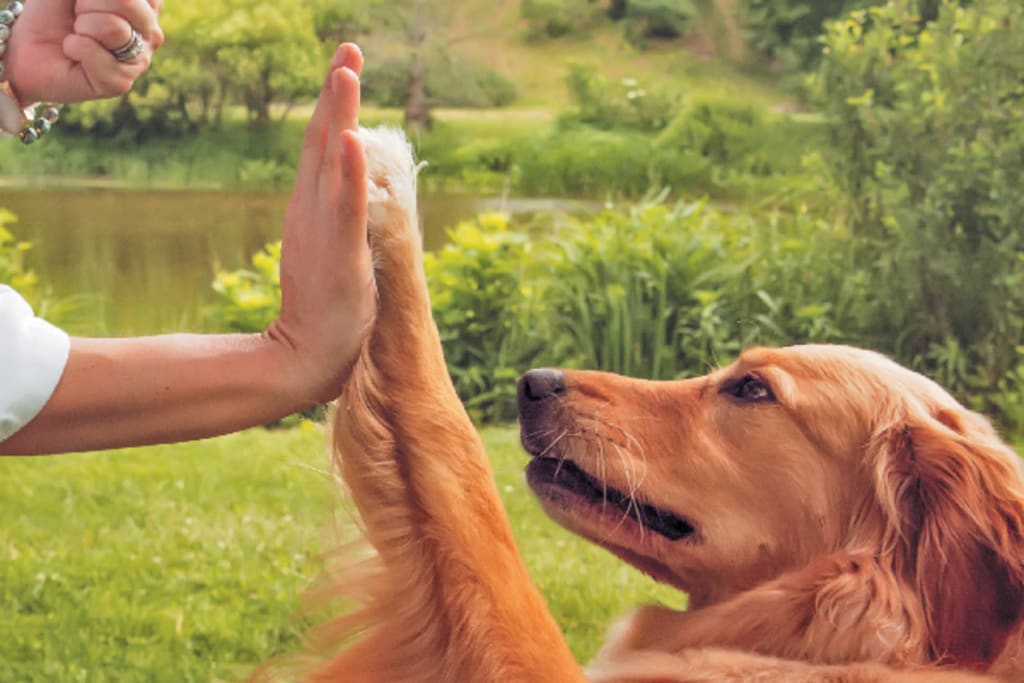Make Man's Best Friend Listen To The Man In Charge
If you want to make your dog relationship better, having your dog trained is very important. Below you'll find tips and hints to help you with the dog training process so you and your dog can have a mess-free, relaxing and fun time together.

A dog is a man's (or woman's) best friend! Dogs are wonderful pets to come home to at the end of a long day or take for a run around your favourite park. If you want to make your dog relationship better, having your dog trained is very important. Below you'll find tips and hints to help you with the dog training process so you and your dog can have a mess-free, relaxing and fun time together.
- Learn to understand what your dog is saying through facial expression. Many people fail to see what a dog says even though he communicates non-verbally with his face, just as we do. When you are training your dog, take some time to see how he responds to commands, rewards and your behaviour. Watching his facial expressions will help training progress and give you a better understanding of your dog.
- Just as reinforcement of good behaviour when training a dog should be immediate, too should punishment for bad behaviour be immediate. Saying "no" in a harsh voice tells the dog he has misbehaved. Still, he only connects the message with the targeted behaviour if that message is delivered immediately after that act.
- Do not train your dog through fear of physical punishment. Teaching your dog to respect your commands and dominance will create a healthy and stable pet. Dogs learn to respect the pack leader in the wild by being dominated, not attacked. Physical punishment can lead to an irrational and often violent pet.
- House training your puppy can be a lot faster and more effective using a crate. The crate should never be used for punishment. The puppy should be put in it at night and in between times of interaction with his owner. His instinct is not to relieve himself in his sleeping area.
- Do not use shock collars and similar training devices. These devices are expensive and do not always work as well as you would expect them to. Plus, shock collars are not positive reinforcement when your dog is exhibiting proper behaviour. This kind of approach often ends in disaster.
- Repetition is one of the most important aspects of training any pet. Simply showing your dog how to behave one time only is ineffective. Reinforcing ideas is essential, and your dog will eventually be much more responsive.
- The best way to prevent your dog from barking excessively is to make him more comfortable with whatever it is he barks at so frequently. Dogs bark at anything that scares or threatens them, so if you show your dog that the object of their fear is nothing to be afraid of, he'll stop barking.
- Always be patient when you train your dog. This will make it less likely that you or your dog will become frustrated or upset with the process of training. Keep in mind that your dog aims to please you. However, it does not understand your language, so it takes time to learn what you expect.
- To teach your dog to sit, gently push down on his behind as you give the verbal command "Sit!" and make a hand gesture with your palm facing down. Each time your dog sits successfully, even if you have to help him out, give him a treat and praise him. Your dog must know how to sit so that you can build on this command and eventually teach him to "Stay!"
- Consider moving your voice up or down in a specific manner associated with individual commands to help your dog remember them better. Dogs are fantastic at understanding pitch differences, even more than understanding the sounds of the words. So if you alter your voice slightly when you say a specific command, the dog will be more likely to remember what to do.
- If you're tired of your dog pulling on the leash while walking with you, here's a simple training method. Take your leashed dog to an outside place that is familiar to both of you - such as the backyard - then begin to walk. If your pet stays beside you, right at your thigh, reward it with a treat. If the animal rushes forward, stop walking. If it wanders off for some reason, say "let's go" in a positive way and turn and walk another way. When it catches up with you, give it a treat, and if it doesn't catch up, pull gently on the leash until it gets the point. In this way, you reward good behaviour and don't have to be unduly harsh for bad behaviour.
- An often overlooked necessity with dog training is family training. Your dog will be confused and shocked when multiple members of the family give commands in a variety of ways. Train your spouse, children and anyone else who will have consistent contact with your dog on the proper commands and techniques you employ for training.
- For dogs that hate nail trims, get them used to have their paws trimmed one step at a time. First, hang out with your dog when she's calm and lying down. Touch her paws gently during petting, and treat and praise when she doesn't react. Continue this process over weeks and step it up to gently picking up her paws. You'll eventually introduce the nail trimmers without a trim, and then finally, trimming. It's a long road, but it will save you money on nail trims in the future.
When training your dog, avoid overlong training sessions by training your dog in several smaller sessions spaced throughout the day. By scattering your training at different times throughout the day, your dog will learn to listen to you whenever and wherever you are.
Having your dog trained can make all the difference in your relationship. By following the above tips, you'll be able to have a better time with your dog with less hassle and mess. If your dog weren't your best friend before, he or she would be after some simple dog training!
About the Creator
hashan tagari
I am a blogger. Love to write Content on new technology, the latest tech news, gaming, gadgets review, and android. I also love to write about pets, health, business, finance, and the latest tips and tricks.






Comments
There are no comments for this story
Be the first to respond and start the conversation.